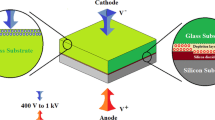Abstract
Die attach is one of the major processes that may induce unwanted stresses and deformations into micro-electro-mechanical systems (MEMS). The thermo-elastic coupling between the die and package may affect the performance of MEMS under various temperature loads, causing unreasonable effects of the output signal, such as zero offset, temperature coefficient of offset (TCO), nonlinearity, ununiformity and hysteresis, etc. A complete characterization of these effects is critical for a more reliable design. This work presents experimental studies of the temperature effects on the dynamic properties of MEMS. Microbridges and strain gauges with different dimensions were used as test structures. They were surface-micromachined on test chips and the chips were die attached on organic laminate substrates using epoxy bonding as well as tape adhering. The material and dimension of the substrate were specially defined to amplify the magnitude of the coupled deformation for the convenience of investigation. Modal frequencies of the microbridges under a set of controlled environmental temperature before and after die attach were measured using a laser Doppler vibrometer system. The average initial residual strain was also measured from the strain gauges to help analyze the dynamic behavior. Nonlinear TCO of the frequencies were observed to be as large as 2,500–5,000 ppm for the epoxy-bonded samples, in contrast with much smaller values for the tape-adhered and unpackaged ones. The frequencies recovered to their original values beyond the curing temperature of the epoxy. A distributed feature was also observed in frequencies of the microbridges with the same length but at different locations of the chip with a maximum relative difference of 20%. The process of thermal cycling and wire bonding was also applied to the samples and caused tender shifts of the frequencies. The experiments reveal major factors that are related to the temperature effects of die attached MEMS and the results are useful for improving the reliability of a package–device co-design.









Similar content being viewed by others
References
Bart SF, Zhang S, Rabinovich VL, Cunningham S (2000) Coupled package–device modeling for microelectromechanical systems. Microelectron Reliab 40:1235–1241. doi:10.1016/S0026-2714(00)00010-X
Cherepanov GP (1995) On the theory of thermal stress in a thin bonding layer. J Appl Phys 78:6826–6832. doi:10.1063/1.360443
Chiou JA (2003) Simulations for thermal warpage and pressure nonlinearity of monolithic CMOS pressure sensors. IEEE Trans Adv Packag 26:327–333. doi:10.1109/TADVP.2003.818052
De Anna E, Roy S, Zorman CA, Mehregany M (1999) Modeling MEMS resonant devices over a broad temperature range. Ansys Solut 11:22–24
Ikehara T, Zwijze RAF, Ikeda K (2001) New method for an accurate determination of residual strain in polycrystalline silicon films by analysing resonant frequencies of micromachined beams. J Micromech Microeng 11:55–60. doi:10.1088/0960-1317/11/1/309
Krondorfer E, Kim YK, Kim J, Gustafson CG, Lommasson TC (2004) Finite element simulation of package stress in transfer molded MEMS pressure sensors. Microelectron Reliab 44:1995–2002. doi:10.1016/j.microrel.2004.05.020
Lee CC, Peng CT, Chiang KN (2006) Packaging effect investigation of CMOS compatible pressure sensor using flip chip and flex circuit board technologies. Sens Actuators A Phys 126:48–55. doi:10.1016/j.sna.2005.09.018
Li G, Tseng AA (2001) Low stress packaging of a micromachined accelerometer. IEEE Trans Electron Packag Manuf 24:18–25. doi:10.1109/6104.924788
Melamud R, Hopcroft M, Jha C, Kim B, Chandorkar S, Candler R, Kenny TW (2005) Effects of stress on the temperature coefficient of frequency in double clamped resonators. In: Proceedings of IEEE Transducers’05, Seoul, pp 392–395
Meyyappan K, McCluskey P, Chen LY (2003) Thermomechanical analysis of gold-based SiC die-attach assembly. IEEE Trans Device Mater Reliab 3:152–158. doi:10.1109/TDMR.2003.821538
Nicu L, Bergaud C (1999) Experimental and theoretical investigations on nonlinear resonances of composite buckled microbridges. J Appl Phys 86:5835–5840. doi:10.1063/1.371600
Ozdoganlar OB, Hansche BD, Carne TG (2005) Experimental modal analysis for microelectromechanical systems. Exp Mech 45:498–506. doi:10.1007/BF02427903
Peng CT, Lin JC, Lin CT, Chiang KN (2005) Performance and package effect of a novel piezoresistive pressure sensor fabricated by front-side etching technology. Sens Actuators A Phys 119:28–37. doi:10.1016/j.sna.2004.08.013
Reynolds JK, Catling D, Blue RC, Maluf NI, Kenny T (2000) Packaging a piezoresistive pressure sensor to measure low absolute pressures over a wide sub-zero temperature range. Sens Actuators A Phys 83:142–149. doi:10.1016/S0924-4247(00)00294-6
Song J, Li M, Huang QA, Tang JY (2007) Package level simulation and verification of microsystems. In: Proceedings of IEEE Sensors’07, Atlanta, pp 99–102
Tsai MY, Lin YC, Huang CY, Wu JD (2005) Thermal deformations and stresses of flip-chip BGA packages with low- and high-Tg underfills. IEEE Trans Electon Packgag Manuf 28:328–337. doi:10.1109/TEPM.2005.856536
Wen Y, Basaran C (2004) An analytical model for thermal stress analysis of multi-layered microelectronic packaging. Mech Mater 36:369–385. doi:10.1016/S0167-6636(03)00076-0
Zhang XR, Tee TY (2004) Advanced warpage prediction methodology for matrix stacked die BGA during assembly process. In: Proceedings of the 54th IEEE electronic components and technology conference, Las Vegas, pp 593–600
Zhang X, Zhang TY, Zohar Y (1998) Measurements of residual stress in thin films using micro-rotating-structures. Thin Solid Films 335:97–105. doi:10.1016/S0040-6090(98)00952-3
Zhang X, Park S, Judy MW (2007) Accurate assessment of packaging stress effects on MEMS sensors by measurement and sensor-package interaction simulations. J Microelectromech Syst 16:639–649. doi:10.1109/JMEMS.2007.897088
Acknowledgment
This Project is supported by the National High-Technology Research Program of China under Grant No. 2007AA04Z320.
Author information
Authors and Affiliations
Corresponding author
Rights and permissions
About this article
Cite this article
Song, J., Huang, QA., Li, M. et al. Influence of environmental temperature on the dynamic properties of a die attached MEMS device. Microsyst Technol 15, 925–932 (2009). https://doi.org/10.1007/s00542-009-0818-1
Received:
Accepted:
Published:
Issue Date:
DOI: https://doi.org/10.1007/s00542-009-0818-1




